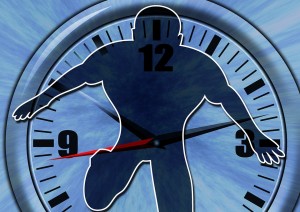Three years, two months, and six days into supplement stacking Piracetam, Citicoline, & Rhodiola Rosea, a pleasant realization dawns upon you:
Your mind is still working, your heart is still beating, your lungs are still moving, your limbs are still attached, your eyes are still seeing, your ears are still hearing, your feet are still dancing…
For all intents & purpose it would seem that: Nootropics are overwhelmingly safe & free from side effects (Aside from that whole Soviet mind control thing, but we’re willing to overlook that if you are).
Is this all too good to be true, or is there something we’re missing here?
Nootropics & Brain Health
Beginning with the discovery of Piracetam in 1964, Dr. Corneliu E. Giurgea’s concept of nootropics has developed into a broad classification of mind-altering compounds that has simultaneously unraveled & complicated our understanding of nootropics.
Throughout the years we’ve learned that any range of vitamins, minerals, herbs, adaptogens & drugs can serve nootropic purposes—even non-nootropic compounds can offer secondary nootropic functions (SEE: testosterone boosters).
However, not everything we call “nootropic” is, by Giurgea’s definition, a nootropic.
Aside from enhancing memory, focus, and brainpower, one of the largely overlooked criteria for being a nootropic is that it must abstain from the “usual pharmacological side effects of neuropsychotropic drugs” (as according to Dr. Giurgea’s original description of nootropics drugs).
Essentially, this means that by definition nootropics are devoid of side effects.
What’s more, in addition to enhancing cognition, more & more nootropics are showcasing clinical potential to prevent & treat certain mental/neurological disorders by aiding neurotransmitter status, optimizing brainwaves, resisting neurotoxins, & improving all-around brain health.
Nootropics vs. Smart Drugs
Based on the principle of “pharmacological side effects,” Smart Drugs such as Adderall, Ritalin, & Modafinil (even caffeine) don’t qualify as true nootropics due to their known negative health effects.
Typically, such “smart” drugs are legally prescribed & intended for cognitive disorders rather than recreational supplementation—and while they do possess cognitive benefits, namely on focus & awareness, too much of this type of neuronal activity can cause neuronal apoptosis (cell death).
The dose-toxicity levels of nootropics, on the other hand, allow them to service the brain at much larger dosages much more frequently—which shouldn’t suggest that there isn’t a thing as too much nootropism, but for the most part nootropic supplementation is universally healthy for the brain (and actively prevents apoptosis).
Nootropics are increasingly being used as “smart drug” alternatives for enhancing cognition through natural, healthy pathways that fortify brain structures over time, rather than depleting them.
5 (Risk) Factors for Consideration
![By Janelle Weaver [CC BY 2.5], via Wikimedia Commons](https://supplementsinreview.com/wp-content/uploads/2016/04/BrainAge.jpg)
Here are 5 (risk) factors to take into consideration when supplementing nootropics:
1. Age (Brain Development)
Depending on whether you’re in your teens or in your Golden Years, the effects of your supplements can range from beneficial to detrimental. While nootropics are unlikely to cause harm at any age, it’s relatively unknown how long-term use affects critical stages of brain development.
The mid-20s are scientifically viewed as the pinnacle of brain development, and thus there’s less of a health risk in consistently taking nootropics past the 25 year mark versus taking them before.
2. Dosage
Perhaps the largest offender in adverse nootropic effects (and positive nootropic effects for that matter) is dosage level.
PET scans of nootropics indicate that a change in dosage can make a remarkable difference on how nootropics affect the brain. For this reason, nootropics typically offer “serving size” guidelines that have shown to be A) effective, and B) safe. Straying from these guidelines is generally not recommended.
3. Frequency of Use
Tying in with dosage level, frequency of use is the second part of the equation on how much daily nootropic you’re ingesting.
Depending on the nootropic, frequency of use might be limited to an “as-needed” basis for moments of high-pressure productivity, while other nootropics require long-term supplementation of days, sometimes weeks, their nootropic potential is fully achieved.
If you find yourself having a hard time kicking a nootropic or struggling to operate without it, consider that a RED FLAG.
4. Mechanism of Action
Citicoline sparks the choline pathway, Vinpocetine boosts cerebral blood flow, Lion’s Mane triggers Nerve Growth Factor.
All of them are spoken of as nootropics, yet their nootropic actions are vastly different. Some nootropics are herbal, some are drugs, others straddle that line—due to this, they can’t all be dosed the same nor do they all serve the same purpose. It’s important to consider mechanism of action when stacking nootropics to avoid concocting a bad batch.
5. Personal Variation
If you haven’t heard, each of us is a beautiful, unique snowflake with our own unique quirks, perks, and genetic-&-lifestyle-influenced setbacks.
Explore any reddit nootropic forum and you’ll soon realize that not everyone shares the same experiences when it comes to brain health supplements. Some users report using nootropics daily for years on end without any cognitive impairments, while others condemn them entirely based on a single negative incident.
While it’s incredibly unlikely for nootropics to have any side effects, this doesn’t mean that, based on individual factors, some users might have negative experiences with them.
Are nootropics addictive?
No. Or at least they shouldn’t be… If nootropics are expected to provide long-term brain benefits, then risk of addiction would run contrary to this expectation. In actuality, one of the key differences between nootropics & smart drugs is that the latter carries a significantly higher risk of addiction than the former—enough of a risk for the DEA to classify many smart drugs (Adderall, Ritalin, Dexedrine) as Schedule II “high potential for abuse” substances. Other drugs that share this category are cocaine, methamphetamine, & Vicodin.
As seldom as they are, nootropic addictions are almost always psychological (i.e. mentally addictive), especially if you use them in a ritualistic manner. In which cases, performing the same routines without nootropic aid might initially feel “off.” On a biological level, the worst you’ll experience is a temporary state of “brain fog” as the mind perceptually adjusts to vanilla, non-nootropic living.
Nootropic Side Effects
But, nootropics aren’t SUPPOSED to have side effects?
We hear you, and you’re right: Nootropics AREN’T supposed to have side effects.
Neither is water for that matter—yet, if you drink an abnormal amount of water or drink water abnormally (with your ears perhaps?), then you’re going to have a bad time.
The same concept applies to nootropics (or really any consumable substance).
Granted, in the realm of supplements & drugs, nootropic side effects are exceptionally rare—if they do occur, it’ll most likely be while you’re first adjusting to the nootropic, or if you’re taking abnormally large & frequent dosages.
Needless to say, because nootropics act primarily on the head, the most reported nootropic side effect is the Headache.
Headaches
A headache is when your head… aches. And it’s one of the most commonly reported nootropic side effects (particularly from Racetams).
Would now be a bad time to point out that, contrary to these reports, a double-blind study on Piracetam & post-concussional victims suggested that the Racetam class nootropic actually alleviated head symptoms?—i.e. headache, vertigo, fatigue, decreased alertness, & general neurasthenia.
It isn’t uncommon for a substance to have a negative effect that contradicts its purported benefits when supplemented inappropriately (ex. T-boosters that inadvertently increase estrogen).
The theory behind the nootropic headache: Under Acetylcholine-promoting conditions, the brain works harder to produce more Acetylcholine than what’s sometimes possible. This puts the brain in a state of neurological over-excitement, resulting in the quote-unquote “headache.”
Solution?
First, check your dosage levels. If you’re taking too much, then you’re demanding too much from your brain.
Second, invest in a high-quality source of choline (Citicoline & Alpha GPC immediately come to mind), which is the precursor to acetylcholine naturally found in eggs, peanuts, & (yum) liver.
Insomnia/Fatigue
Again, is it odd that a substance associated with a benefit can also deter from it?
In this case, stimulating nootropics known to increase alertness & resist tiredness can also lead to insomnia & fatigue if consumed incorrectly.
How to consume incorrectly:
- Evening supplementation. Taking an excitatory nootropic too close to bedtime induces an active, alert mind when it should be tired & relaxed. And even if sleep is managed in this state, there’s no promise that you’ll achieve the restorative stages of slumber.
- Excessive supplementation.e. Taking too much too frequently… This ties in with the previous side effect (headache) in which too much nootropic activity can lead to a brain “burn out,” resulting in a quick energy spike & crash.
Typically, the insomnia comes first, then the fatigue follows.
Solution?
There are three things you can do here—ideally in this order:
- Take your nootropics earlier in the day. Or at least long before you go to bed.
- Serve yourself smaller and/or less frequent dosages throughout the day.
- Consider sleep-promoting nootropics (Melatonin, L-Theanine, Inositol, etc. etc.) to help your mind “turn off” at night.
Although, supplementing uppers & downers at the same time (regardless of their form) is generally inadvisable.
GI Discomfort
Normal GI tract issues tend to arise when a threatening “foreign body” enters the body. Vomiting & diarrhea are the extreme measures taken by the GI tract to eliminate said foreign body.
![By Internet Archive Book Images [No restrictions], via Wikimedia Commons](https://supplementsinreview.com/wp-content/uploads/2016/04/GITract-173x300.jpg)
Solution?
There’s a theme developing here… If you follow dosing directions, then you shouldn’t experience any problems here. Take note the quality of your nootropic, as well: Higher quality forms (standardized herbs, concentrated drugs, etc.) require smaller dosages to have an effect due to their higher, well-tolerated bioavailability.
Other Nootropic Side Effects
Anxiety, lightheadedness, irritability, paranoia, depression… These side effects are very rare (many nootropics have no reports of these), but considering that each nootropic operates on its own mechanism of action, the range of side effects can vary greatly depending a number of factors. For the most part, these side effects arise from not following the “Directions for Use,” but every now and then a messy formulated nootropic supplement can have particular manufacturing flaws.
Additionally, bad nootropic interactions also exist. On a forum, one nootropic user reported strange side effects, including skin rash, OCD-like obsession, irritability, & indigestion, yet his daily stack looked like this:
Piracetam – 4 g
Aniracetam – 400 mg
Bacopa Monnieri – 700 mg
Acetyl-L-Carnitine – 3 g
ALA – 400 mg
Pyritinol – 1.6 g
Choline Citrate – 5.5 g
Idebenone – 340 mg
OMEGA-3 – 8 g
Vitamin B-5 – 2.6 g
L-Tyrosine – 2 g
DLPA – 1.6 g
That’s a very heavy stack. Frankly, if your daily nootropic list reads like that, you should expect some biological weirdness to go down.
Solution?
If something seems off, experiment with your stack to pinpoint exactly what’s going on and work from there. Again, odds are your dosage is too high if you’re experiencing any side effects—which (odds are) will most likely only consist of a headache.
Anything beyond that might require discontinuation of the nootropic(s) and/or a visit to the doctor.
Conclusion
Know your body. Know your nootropics.
As brain health research develops and more compounds are added to the ongoing “list” of nootropics, our overall comprehension of the entire nootropic class paradoxically becomes harder to navigate.
If you’re new to nootropics, start here. Find what works best for your particular needs & interests, understand how it works, whether that fits with what you’re already taking, and remember the Nootropic Rule of Thumb:
If it has side effects, it’s not a true nootropic.



I recently suffered a traumatic brain injury GSW to the head as a result parts of the letft lobe of brain is damaged in what way do you think this with the redevelopment of my mind